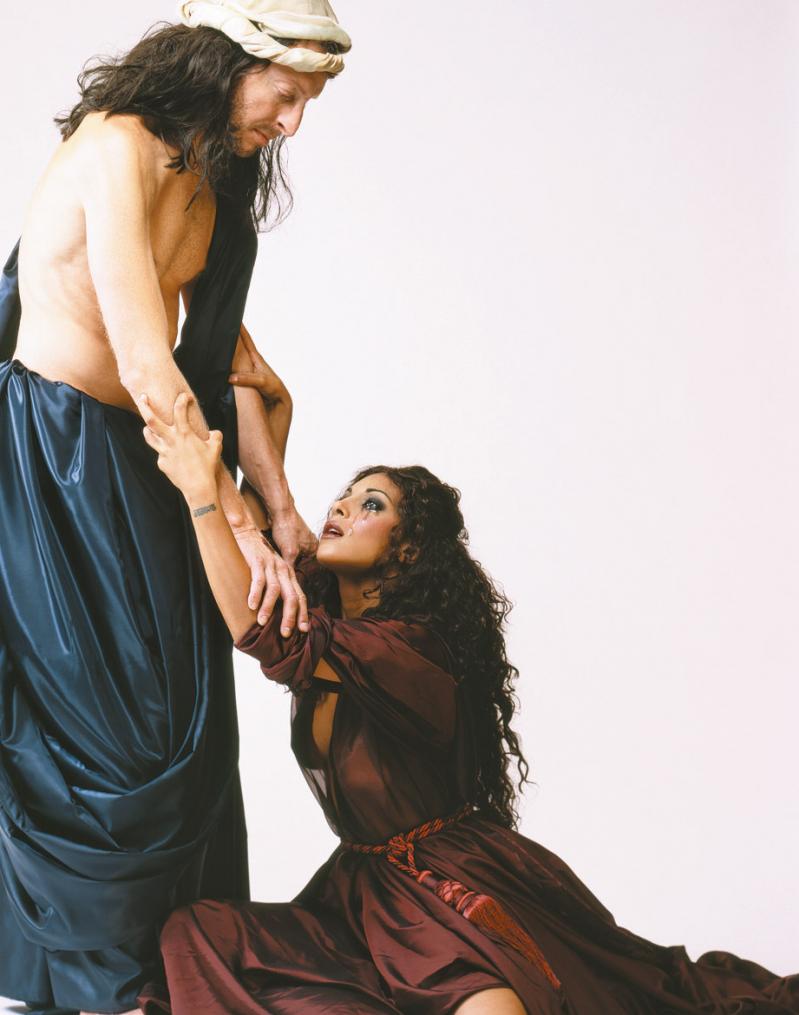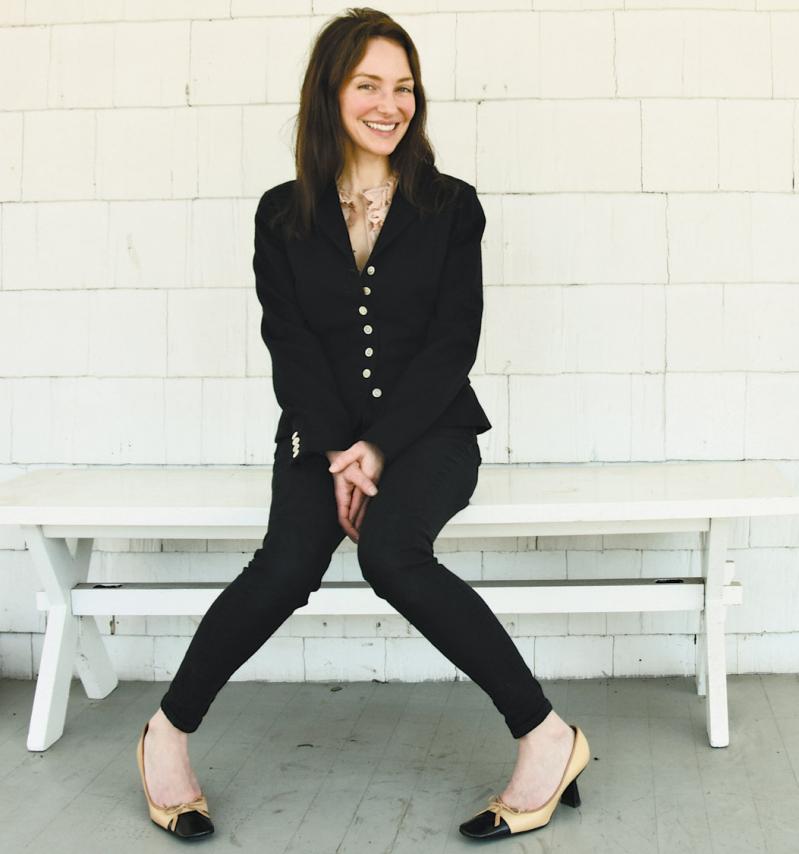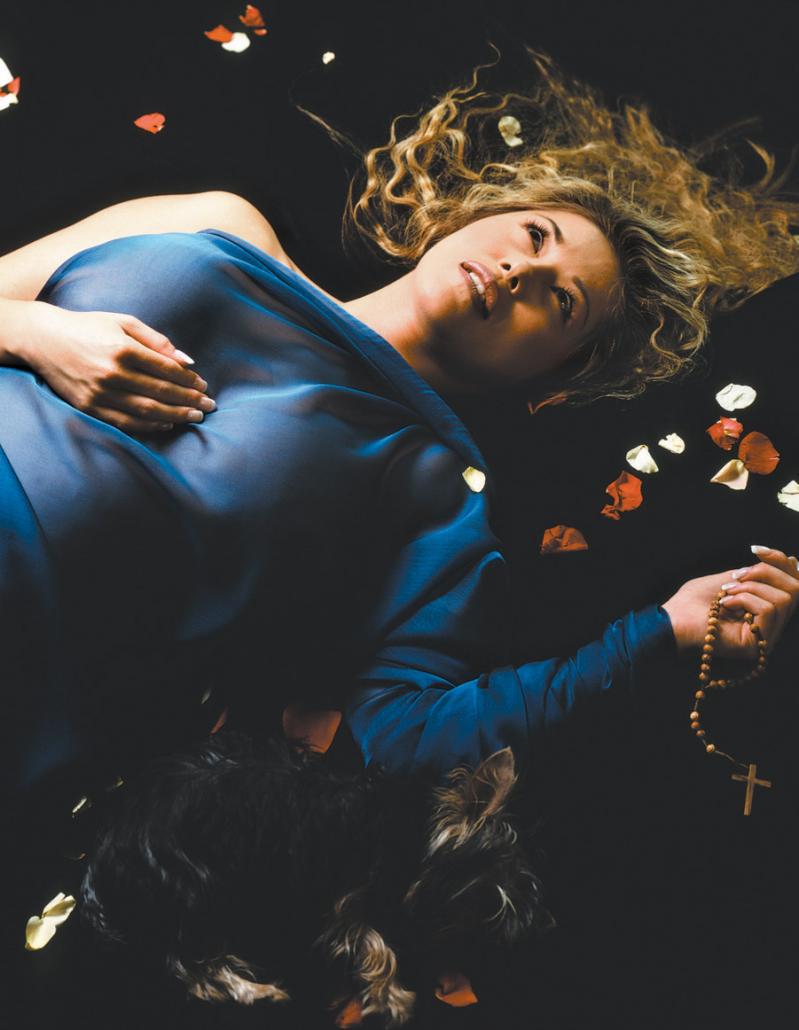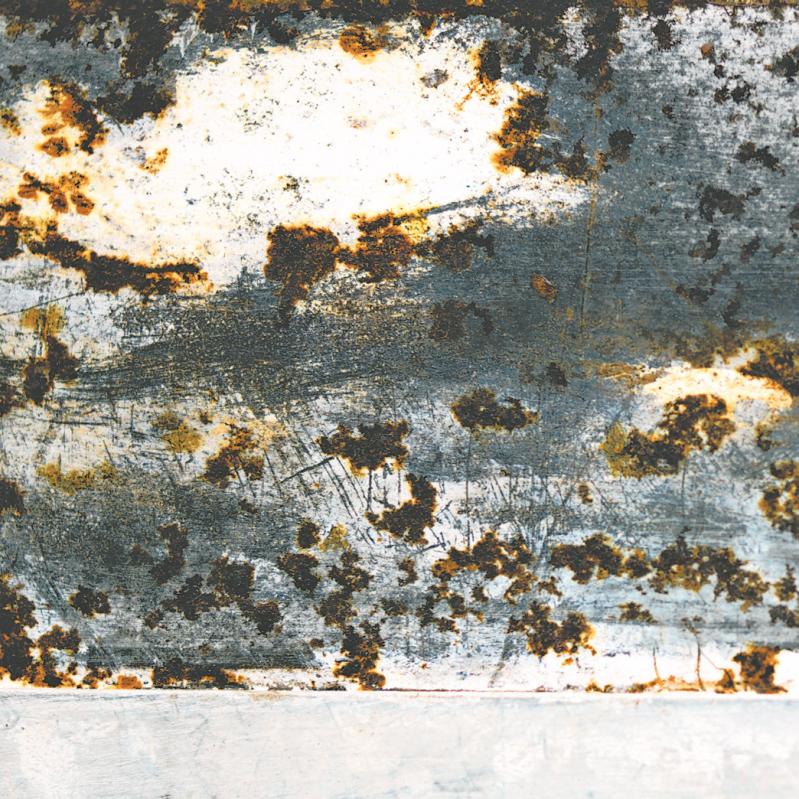If you thought Stormy Daniels was in the midst of a whirlwind, you should speak to Nika Nesgoda. The Amagansett artist and Columbia University graduate student recently discovered that Ms. Daniels, the porn star whose alleged 2006 affair with the president has captured international attention, had modeled for her in 2002 under a different name.
“I had worked with a Stormy, but she was Stormy Weathers at the time. I thought maybe a lot of them were named Stormy. Maybe it was a popular porn name?” Ms. Nesgoda recalled over tea in Amagansett last week. She decided to check and, sure enough, the woman she was seeing on the news was indeed the one who had sat for her.
“Virgin,” a series in which Ms. Nesgoda placed adult film actresses in the costumes and tableaus of old master paintings of the Virgin Mary, has been highlighted on the Time magazine website for the past week. The magazine, which had exclusive use of the images until Monday, published an interview with Ms. Nesgoda and several photos from the series on May 7, the date of the Metropolitan Museum of Art’s Costume Institute Gala, which was celebrating its exhibition “Heavenly Bodies: Fashion and the Catholic Imagination.”
Neither expected, however, that Ms. Daniels, whose real name is Stephanie Clifford, would also appear in the opening sketch of “Saturday Night Live” that week. These external factors, along with the striking visuals of Ms. Nesgoda’s artwork, have made the series popular on social media and placed her in the outer rings of the maelstrom of media attention that surrounds Donald Trump’s presidency.

“I was in a different place back then,” Ms. Nesgoda reflected. It was two years before she had her first child. After that, she shelved the project and her art for a decade while she raised her three children. Once she realized what she had, “I sat on it for a couple of months, thinking ‘What am I going to do with this?’ ” A friend emailed Paul Moakley, the deputy director of photography and visual enterprise at Time, “and he called me back right away and wanted to publish them. I wasn’t really proactive with this.”
Now that the photos are out, she said she would like to take any financial interest in them and funnel it to an organization like the Time’s Up legal defense fund for women and men who have suffered sexual assault or harassment in the workplace, “to donate the series in some way, if it can help in any way those who have suffered, I want to do it.”
Today, she is pursuing a master’s degree at Teachers College, where she is studying education, studio art, and the cello. “My eventual goal is to help with troubled adolescents, when they are in an identity crisis and it can go either way. I’m studying adolescent development and how art helps with finding oneself.”

Some 15 years ago, she was still working out some of her own issues. Coming from a Catholic background, “I was steeped in the church’s iconography and the suspicion and guilt and everything that goes along with that iconography.”
Yet, her parents were hippies, with much more unconventional beliefs. “I saw on both sides an abuse of power that happens anytime things get too structured.” She and her sister, Cheyanne Nesgoda, who participated in “Virgin” by interviewing the actresses while they were being made up and dressed, “encountered a lot of negative things in the way that a lot of people have. Religion can be a very confusing thing for many people.” She said she became “a little rebellious” at a young age.
The inspiration for “Virgin” came from learning that many artists in the 15th through 17th centuries used their lovers or prostitutes as models for the women in their religious paintings. Church leaders quietly condoned the behavior, hoping the models might convert. Most artists hid their subject’s origins by idealizing their features so that they were unrecognizable.
Caravaggio, a revolutionary artist himself, refused to conceal where he found his models. His saints often had dirty feet and bulbous noses; his Christ and Virgin Mary subjects often wore red rather than the traditional blue. Worse, his “Death of the Virgin” appears to be a depiction of a real corpse, already bloated and discolored with the beginnings of decay. That the artist did nothing to elevate his model to the church’s established norms for sacred subjects only added to the factors that led to its rejection by the clergy of Santa Maria della Scala in Rome as unfit for their church.

Concluding that porn stars were today’s “cultural icons, both glorified and scorned at the same time,” Ms. Nesgoda packed up a bunch of art books and flew to Los Angeles, where the actresses worked.
“I was on a low budget and they volunteered their time,” she recalled. “They were excited to be part of a project outside of their regular experience. At the end, I sent everyone a giant Cibachrome print.” (Not that long ago, she traded in her large format film cameras for a used Hasselblad digital camera. She still has lots of film in her refrigerator.)
The paintings she chose spanned the 14th to 17th centuries, including the 1602 “Death of the Virgin,” which Ms. Nesgoda calls by its Latin name, “Mors de Virgine,” as she does the other works. Ms. Daniels appears in “Annuntiatio,” a recreation of a 1333 Simone Martini and Lippo Memmi panel painting.
She wasn’t one of the women Ms. Nesgoda had interviewed before heading west, but instead arrived with the makeup artist on the shoot. He said she was on the brink of stardom and looked magical on camera. Ms. Nesgoda had chosen this version of the “Annunciation” for its Gothic qualities and the elusive reluctance of the Virgin as she learns from the angel Gabriel that she will bear the Son of God.
“She was very professional, a bit quiet,” Ms. Nesgoda recalled. Coming from Louisiana, “she seemed fresh in every way” with a beauty that transcended the centuries. “Her eyes carry a lot of depth. . . . She just nailed the look every time.”

All the women she worked with were “incredibly polite and punctual. All they wanted were Frappuccinos with lots and lots of sugar.” They were “not demanding at all. My sister said, ‘These Madonnas are no prima donnas.’ ” They took the opportunity to speak to them about their spirituality. “They were very spiritual — children of God — and they didn’t see anything wrong with how they expressed themselves.”
These aren’t artworks she hangs on her wall or a project she plans to resurrect. “I always loved these paintings and wanted to honor them in the present,” she said. But for her, “They’re too intense. It was something I had to get out. It was in me for a long time and it felt good just to do it. I’m not really a provocative person.”
Although she spent much of her earlier artistic life focused on portraiture, her current work is devoted to “landscapes in tiny objects,” change, and texture. “I always try to tell a story, but it’s a different story now. I’m still working on that, it’s still evolving.”




